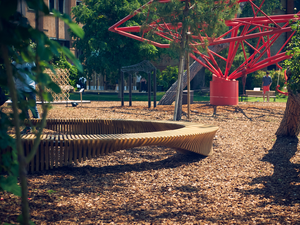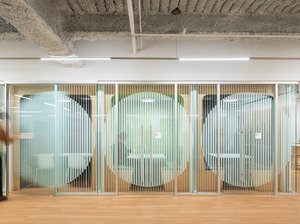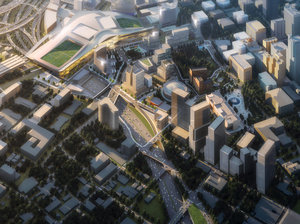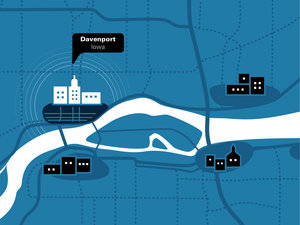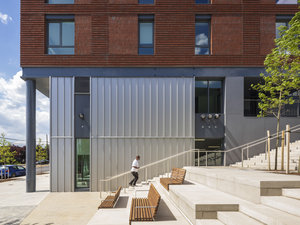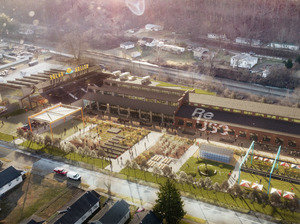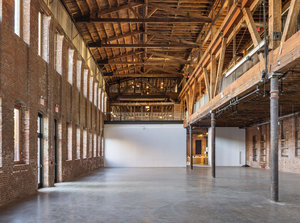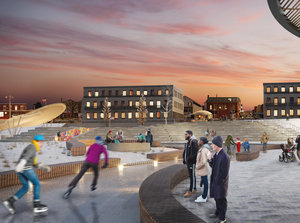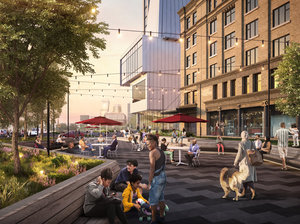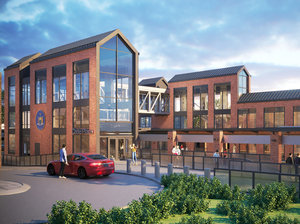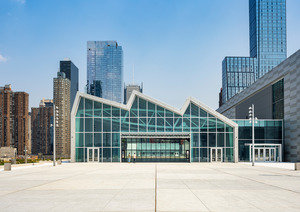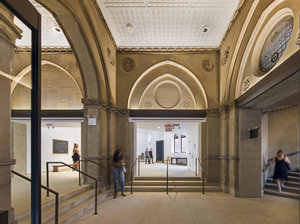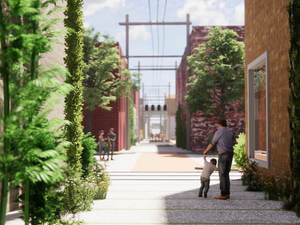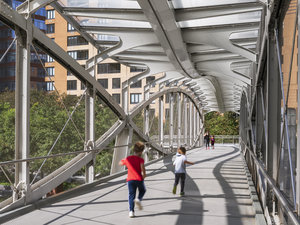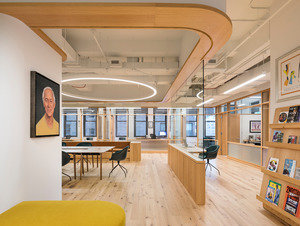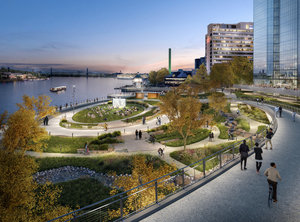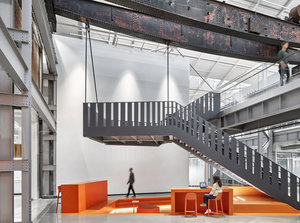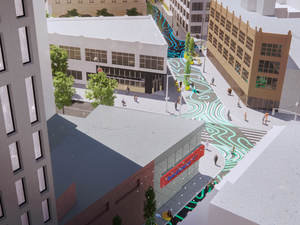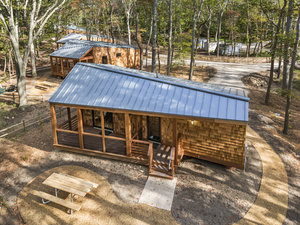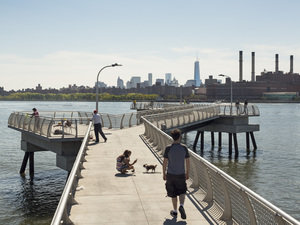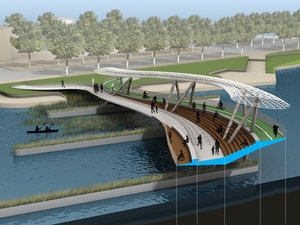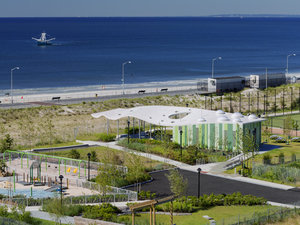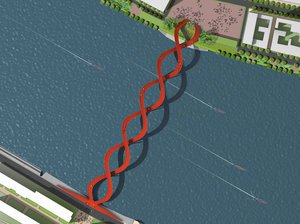Columbus Bridge
1/8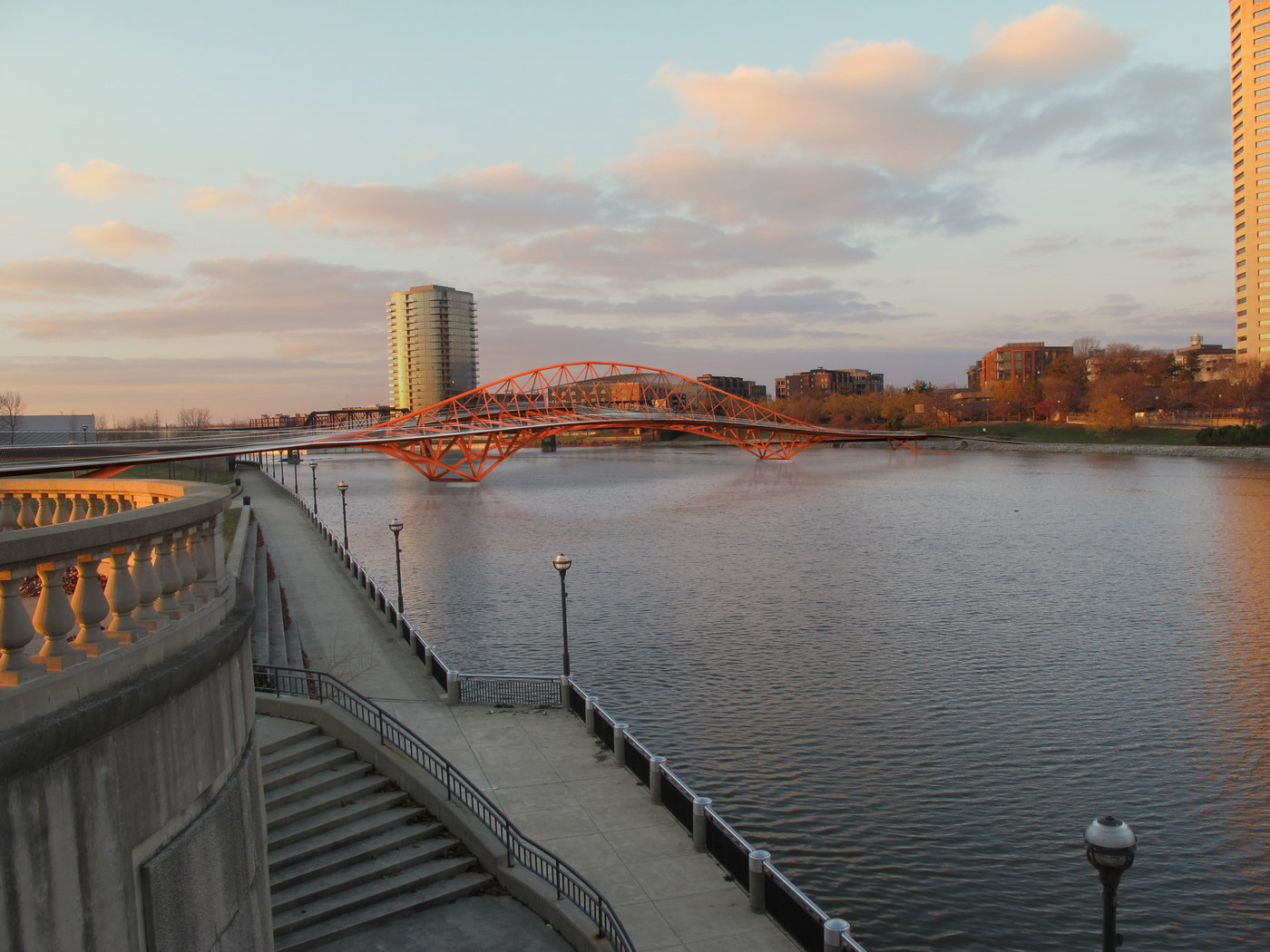
The design for the Columbus Bridge connects the high points on both sides of the river and creates a new porch-like room on the waterfront. The scheme features a torqued arch-shaped truss set on two central bridge piers.
The truss, composed of two stacked triangular frames sharing central chords, forms a frame from which the deck and the brow hangs. The central 500-foot span is flanked by two 200-foot cantilevers which allow for minimal land abutments.

The bridge extends the parks to create a continuous public space from riverbank to riverbank. The torqued truss creates a place for two different kinds of experiences that meet in the center of the bridge. Two walkways at slightly different levels are connected through the truss and provide a number of appealing seating options and spaces for rest and gathering.
The elevation change also varies bridge users’ visual experiences of the river and downtown Columbus. At the landings, cantilevered walkways connect to bicycle paths and wheelchair access. The areas below the bridge could also support new urban amenities such as seasonal cafes or bike rest stops.

